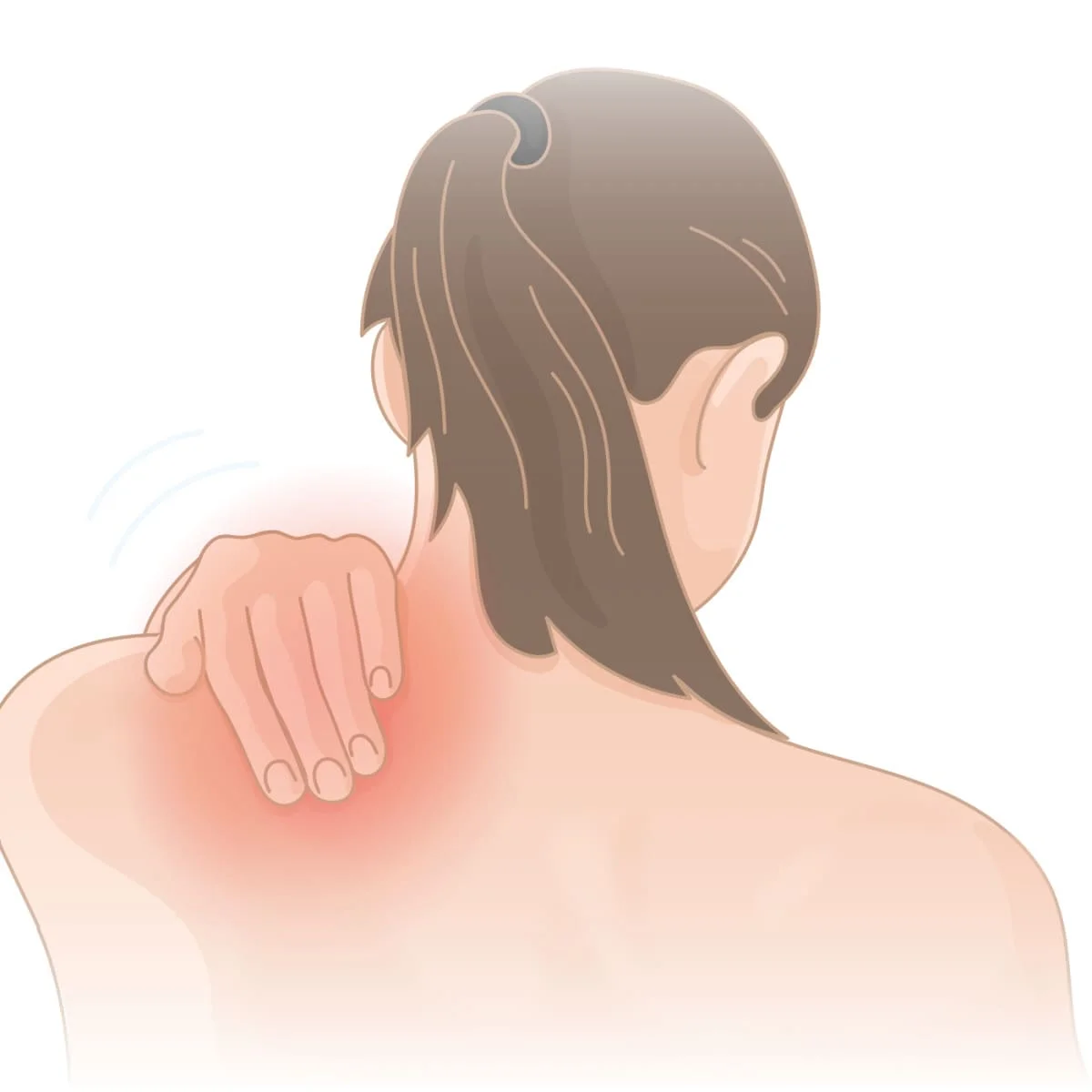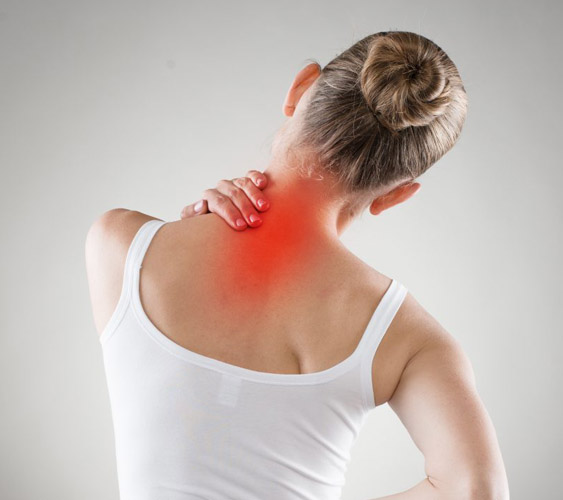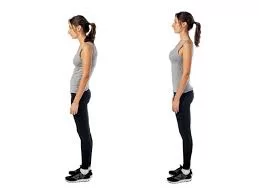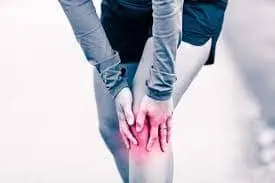Shoulder blade muscles pain
When you feel pain in the upper back means around the scapula bone & also feel weakness in the affected arm, mostly when doing the overhead movements, it is indicated to be muscle pain in the shoulder blade.
You also feel to snapping sound when you try to move your shoulder joint.
This pain is due to many reasons like Muscle strains & occur to injuries in the shoulder blade muscle.
This injury is produced by pain with swelling & redness in the muscle pain area.
This pain is released by to RICE principle, pain medication & physiotherapy treatment.
Table of Contents
What is shoulder blade muscles pain?
- Shoulder Blade muscles pain occur between the shoulder blades is common.
- Sometimes Doctors refer to this discomfort as inter-scapular pain.
- You feel pain in the shoulder blade typically of dull, aching, shooting & sore pain in the upper part of the back between the shoulder blades.
- Most of the time this pain is not too serious, but in some cases, it has become a sign of a more serious condition.
- So you must try to learn about the causes of muscle pain & treatment & prevention points of the pain.
What is the anatomy of the shoulder blade?
- The shoulder blade is also known as the scapula bone.
- It is a large & triangular-shaped bone that lies in the upper back.
- This scapula bone is surrounded & supported by a complex system of muscles that work together to help you move your arm.
- Around the shoulder blade, muscles include the rotator cuff muscles and teres major.
- In the rotator cuff muscles include supraspinatus, infraspinatus, subscapularis & teres minor.
- All these muscles are located around the shoulder blade.
- The shoulder blade muscle has many functions One of these functions is support to pivotal movements of the shoulder joint.
What are the Causes of the shoulder blade muscles pain?
- Muscle strains:
- Occur when the muscle becomes too overstretched & torn.
- It occurs due to many reasons including:
- When you lift something heavy
- Poor posture
- When you work at a computer for long periods means the whole day.
- During exercise & sleep
- Injuries:
- When occur to Injuries other parts of your body also lead to pain between your shoulder blades.
- These injuries include:
- Spine fractures
- Shoulder dislocation
- Rotator cuff tears
- If occur to other injuries like as trauma
- Other causes:
- Other causes of this pain include:
- Scoliosis & degenerative disc disease
- Occur to a herniated & bulging disc in the spine
- When in the people occur to osteoarthritis in the joints around your neck, spine & ribs
- Due to any reason occur to spinal stenosis & a narrowing of your spinal cord
- Myofascial pain syndrome
- Shingles
- Fibromyalgia
- Acid reflux
- Certain cancer conditions like lymphomas, lung cancer, esophageal cancer, liver cancer & all cancers that are spread to bones
- Some Emergency causes:
- When occur to Some sudden events & give the result in shoulder pain which requires emergency care. These conditions produce severe pain, include to Some conditions like as :
- Heart attack = this Shoulder blade pain sometimes occurs as a symptom mostly of heart attacks mostly in women.
- Aortic tear = occurs due to a tear & rupture in the inner layer of the aorta, which also produces sharp & severe pain in your upper middle back.
- Pulmonary embolism = when occurring pulmonary embolism is also produced by sudden & sharp pain in the shoulder blades accompanied by shortness of breath.
What are the symptoms of shoulder blade muscle Pain?
- You feel pain, which is either a dull ache & or sharp, around the scapula bone.
- Feeling of weakness in the affected arm mostly when you attempt the overhead movements.
- This pain is doing the limited range of motion – ROM so that you feel too difficult to raise your arm above your shoulder joint.
- Sometimes you also hear to snapping sound during the shoulder joint movement.
- You are seeing the visible projection of the scapula which is known as winging of the scapula.
- You also feel to your posture is tilted on the affected side.
What is the Diagnosis of shoulder blade muscles pain?
- When you meet to doctor for an injury then the doctor is asked to you some questions about the medical history & symptoms.
- During the physical examination, the doctor is check the weakness, tenderness & tightness in the area of the scapula & shoulder joint.
- Then the doctor is suggest to you some imaging tests for diagnosis :
- CT scan
- X-ray
- MRI scan
- Sometimes the doctor is referring to you specialist doctor like a neurologist & or an orthopedist for a further diagnosis & specialized treatment.
In which condition do need you contact to the doctor as an emergency?
- You should contact the doctor when your pain is become too severe, unusual & doesn’t go away after 1 week & after the primary treatment.
- When you feel the following symptoms with the pain for many days then you need contact to a doctor including:
- Chest pain
- Excessive sweating
- Coughing up blood
- Shortness of breath
- Rapid or irregular heart rate
- Lightheadedness
- Fever
- Loss of vision & consciousness
- Sudden difficulty speaking
- Paralysis on one side of your body
- Unexplained weight loss
What is the Treatment of the shoulder blade muscles pain?
- Treatment for your shoulder blade pain will depend on the cause & severity of your condition.
- Recovery time is vary from person to person.
RICE principle:
When you feel pain in the muscle doctor is advised to RICE principle as home treatment or primary treatment.
- R – rest = When you feel muscle pain you must do the rest for sometimes form activities release to muscle pain.
- I- ice = You are Applied to ice on the area of the pain for 20 minutes, release to swellings & muscle pain but always applied to the ice with the help of a towel between the skin & ice prevent ice burn, you can also be used to ice pack & frozen peas for ice therapy.
- C- compression = You can also apply compression bandage release to muscle pain, and swelling.
- E- elevation = You must be elevated to the injured arm with the help of a pillow under the arm for release to muscle pain & swellings.
Pain Medications:
- Some medications which are helpful to you relieve pain & discomfort between your shoulder blades.
- You can take to various anti-inflammatory drugs like Naproxen sodium & Ketoprofen.
- Sometimes the doctor is suggest to you steroids for severe pain like a pill & injection which help you release the pain & inflammation.
- Sometimes the doctor prescribed muscle relaxers & certain antidepressants drug for pain management.
- You can also be used to pain reliving gel & spray such as volini gel & spray release to muscle pain.
Hot & cold therapy:
- When you Apply hot & cold compresses between your shoulder blades it relieves discomfort.
- Typically, the best use of this treatment is applied for 15 minutes at a time & every few hours.
Diet:
- Certain foods contribute to inflammation in your body which may worsen your symptoms.
- So that avoid processed foods & eat plenty of fruits & vegetables or Choose foods high in omega-3 fatty acids, like salmon.
What is Physiotherapy treatment for shoulder blade muscles pain?
When the muscle pain is not relieved after the home treatment & pain medication then the doctor has advised physiotherapy treatment to release muscle pain.
Physiotherapy treatment is help you relieve pain, swelling, spam & tightness of the muscle pain.
The physiotherapy treatment includes massage, electrotherapy treatment & exercise therapy.
Massage :
- When the trigger or tender points is present in the muscle pain area therapist is advised to massage therapy release to the muscle pain.
- Massage is applied after 2 – 3 days of following the RICE principle when you feel to release of the pain.
- Massage is applied with the help of the oil & applied for 5 -10 minutes.
- Massage is applied 3 times per day at home.
Electrotherapy treatment :
After the RICE principle, pain medication & massage if the muscle pain is not relieved then used Electrotherapy treatment is released muscle pain.
To relive the swellings, spams & pain therapist is advised to you electrotherapy treatment.
In electrotherapy, the treatment therapist is used to many machines.
- When the trigger & tender points are present therapists apply US = ultrasound therapy for the release of muscle pain.
- This treatment is applied with the help of gel & applies for 5 to 10 minutes on the area of pain.
- This therapy helps you release pain & swelling.
- Reduce to pain therapist is applied to SWD = short wave diathermy, IFT = Interferential Therapy, TENS = Transcutaneous Electrical Nerve Stimulation on the area of pain.
- SWD = Short wave diathermy is hot therapy for release to spams on the area of pain.
- IFT = Interferential Therapy & TENS = Transcutaneous Electrical Nerve Stimulation is applied with the help of gel & electrodes on the area of pain.
- This therapy is applied for 10 minutes to the area of pain.
Exercise therapy for Shoulder blade muscles pain :
After following the RICE principle for the 2- 3 days at home & primary treatment & the help of pain medication, you feel released from the pain.
When you feel too comfortable & release from your muscle pain then the physiotherapist is advised to you exercise therapy reduce to muscle weakness & tightness.
The exercise therapy for muscle pain includes Stretching & strengthening Exercises.
Stretching exercise helps to relieve muscle tightness as well as strengthening Exercise is help you relieve muscle weakness.
Stretching exercise:
After the follow of Electrotherapy for 2-3 days for release to muscle pain by physiotherapist then the therapist is advised to stretch for release to muscle tightness.
This stretching is applied when your pain is released & when you feel comfortable.
This all Stretching exercise helps you release muscle pain & tightness.
- Shoulder stretch
- Ear to shoulder
- Cross arm stretch
- Thread the needle
- Across-the-chest stretch
- Doorway shoulder stretch
- Pendulum stretch
- Cross-body shoulder stretch:
- Eagle arm stretch
- Standing wall stretch
Shoulder stretch:
- You are Extend to one arm out in front of you.
- With your other arm, pull the elbow joint of the outstretched arm toward your chest.
- Hold this stretching position for about 30 seconds.
- Repeat this stretching exercise 10 times in 1 session & repeat this session 3 times per day.
Ear to shoulder:
- You are sitting with a straight spine & tilt your head toward your right shoulder joint.
- Then Go as far as you can without straining & lifting your left shoulder joint.
- For Deepen the stretch by using your right hand to gently pull your head down.
- Hold this stretching position for 30 seconds.
- Repeat this stretching exercise 3 times in 1 session & 3 sessions per day.
Cross arm stretch:
- Start with your left arm across the front of your body at about chest height.
- For Support use your left arm with the elbow joint crease of your right arm.
- Then use your right hand to hold your left arm.
- Stretch out your shoulder joint & continue to face forward.
- Hold this stretching for 30 seconds.
- Repeat this stretching exercise 3 times in 1 session & 3 sessions per day.
Thread the needle:
- This exercise starts with all fours with your hands directly under your shoulders & your knee joint underneath your hip joint.
- Lift your right hand & slowly bring it over to the left with your palm facing up.
- Rest your body on your right shoulder & turn your head to face to the left.
- Make sure you are not sinking onto your shoulder joint.
- Hold this exercise position for 30 seconds.
- Slowly release & come back to the original position.
- Repeat this stretching exercise 3 times in 1 session & 3 sessions per day.
Across-the-chest stretch:
- Start this exercise with your right arm across your chest.
- Place the arm in the crease of your left elbow joint & use your left hand to support your arm.
- Hold this stretching position for up to 1 minute.
- Then Repeat on the opposite side.
- Do this stretching each side 3–5 times.
- To deepen the stretch, lift your arm at shoulder height.
- Repeat this stretching 3 times in 1 session & 3 sessions per day.
Doorway shoulder stretch:
- You are standing in a doorway with your elbow joint & arms forming a 90-degree angle.
- Then Step your right foot forward as you press your palms into the sides of the door frame.
- Lean forward & engage your core muscle.
- Hold this stretching position for up to 30 seconds.
- Repeat the stretching with your left foot forward.
- Repeat this stretching exercise 3 times in 1 session & 3 sessions per day.
Pendulum stretch:
- You are standing with the feet hip-width apart.
- Lean forward & look at the ground.
- Then Place the right hand on a table & chair for support.
- Let the left arm hang down.
- then Swing the left arm gently in small circular motions & letting gravity do most of the work.
- Continue this stretching for 30 seconds to 1 minute.
- Then Change the direction of the motion.
- Repeat this stretching exercise 3 times in 1 session & 3 sessions per day.
Cross-body shoulder stretch:
- You are standing with the feet hip-width apart.
- Then try to Stretch the right arm out straight.
- Start the right arm across the body, so that place the hand points to the floor on the other side of the left leg.
- Bend the left arm at the elbow joint.
- Then Hook the left forearm under the right arm & for support use the right arm above the elbow joint.
- Use the left forearm to pull the right arm further in & across the body & try to stretch the back of the right shoulder.
- Hold this stretching for 30 seconds, then repeat this stretching on the other side.
- Repeat this stretching exercise 3 times in 1 session & 3 sessions per day.
Eagle arm stretch:
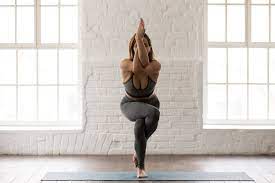
- You are standing with your feet hip-width apart.
- During Inhale & lift the arms to the sides.
- During Exhale & swing the arms in toward the body.
- Then Allow the right arm to cross under the left arm.
- Cradle the left elbow joint in the crook of the right elbow joint.
- Start the palms together so that they reach for each other.
- When the palms are not touching & hold the backs of the hands together.
- Then take three or four deep breaths.
- Release the stretch & repeat it on the other side with the left arm crossed under the right.
- Repeat this stretching exercise 3 times in 1 session & 3 sessions per day.
Standing wall stretch:
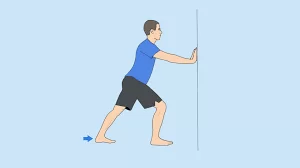
- First Place both hands on a wall from a 90-degree angle to your body.
- Then Walk your feet back till your arms are straight & bow, hinging forward at the hip joint.
- But take care of this thing Don’t push on the wall & don’t allow your arms to raise too high to avoid shoulder impingement.
- Must be Keep your shoulder blades set back & avoid scrunching your shoulder joint around your neck.
- Repeat this stretching exercise 3 times in 1 session & 3 sessions per day.
Strengthening Exercises:
After the follow of Electrotherapy & massage for 2 -3 days for release to muscle pain by physiotherapist then the therapist is advised to you strengthening exercise for release to muscle weakness.
This strengthening exercise is always advised when you feel to release pain & when you feel comfortable.
This all strengthening exercise helps you muscle weakness & pain.
- Shoulder blade squeeze
- Arm circles
- Plank
- Shoulder raises
- Shoulder rolls
- Chin retraction
- Standing arm swings
- Standing arm lifts
- Wide-legged standing forward bend
- Cat cow pose
- Reverse prayer pose
- Cow face pose
- Eagle arms spinal rolls
- Cross-body arm swings
- Ragdoll Pose
- Shoulder rotation
- T, Y & I movements
Shoulder blade squeeze:
- You are Standing up straight.
- Bring the elbow joint back & inward.
- Pulling the shoulder joint blades down & back.
- Then Return to the starting position.
- Repeat this exercise 10 times in 1 session & repeat this session 3 times per day.
Arm circles:
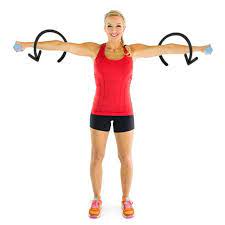
- You are standing upright with your arms are feet shoulder-width apart & your arms are straight down your sides.
- Then Move your arms around in big circles going forward.
- Must Be sure to keep your arms straight.
- After several reps, switch – to the opposite direction so that you move your arms in a circle going backward.
- Repeat this exercise 10 times in 1 session & repeat this session 3 times per day.
Plank:
- You are lying on the floor facing down, with your elbow joint bent.
- Then Tighten your abdominal muscles as you lift the hip & knee joint off the floor.
- Then Hold this position for 30 seconds & return to the starting position.
- Repeat this exercise 10 times in 1 session & repeat this session 3 times per day.
Shoulder raises:
- You are standing or sitting position.
- This exercise starts with your arms by your side & a straight back.
- Then slowly lift your shoulder joint toward your ears.
- Hold this exercise for 10 seconds & return to the slow starting position.
- Repeat this exercise 10 times in 1 session & 3 sessions per day.
Shoulder rolls:
- First Maintain good posture in the standing or sitting position.
- Then Roll your shoulders joint up, back & down.
- Do this exercise movement 10 times.
- Then roll your shoulder joint up, forward & down 10 times.
- Repeat this exercise 10 times in 1 session & 3 sessions per day.
Chin retraction:
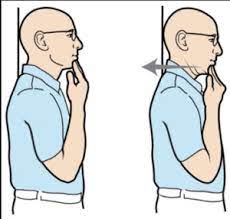
- First maintain your head, neck & spine in the standing & sitting position.
- Extend your arm & chin in front of you as far as go without straining.
- Then pull the chin back into your throat & neck.
- Repeat this exercise 10 times in 1 session & 3 sessions per day.
Standing arm swings:
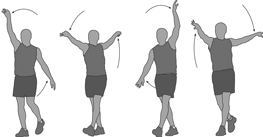
- You are standing with your arms by your side & your palms facing your body.
- Then Swing your arms forward to bring your arms as high up as they go without raising your shoulders joint.
- Lower the arms back down & bring them as far back as you can.
- Keep the rest of your body still.
- Continue this movement for 1 minute.
- Repeat this exercise 10 times in 1 session & 3 sessions per day.
Standing arm lifts:
- First Make fists with your hands & bring them in front of your hip joint.
- Then do the Inhale as you lift your arms overhead so that your hands come together above your head.
- After that Lower back down to the original position.
- Repeat this exercise 10 times in 1 session & 3 sessions per day.
Wide-legged standing forward bend:
- You are standing with your feet wider than hip distance with your toes facing forward.
- Then Interlace your hands behind your back & open your chest.
- Engage your leg muscles & must keep a slight bend in your knee joint.
- Hinge at the hip joint to fold forward & bringing your arms over your head toward the floor.
- Then Allow your head to hang down & tuck your chin in slightly to your chest.
- Remain in this pose for up to 1 minute.
- Repeat this exercise 10 times in 1 session & 3 sessions per day.
Cat cow pose:
- First Place your hands underneath your shoulder joint & your knee joint underneath your hip joint.
- During inhale fill your belly with air & let it sink as you look up.
- During Exhale as you engage your abdominal muscle.
- Then try to tuck your chin into your chest & around your spine.
- Continue to do this movement for a few minutes & must focus special attention on your shoulder joint.
- Repeat this exercise 10 times in 1 session & 3 sessions per day.
Reverse prayer pose:
- You are performing this pose in the sitting, standing position & tree pose.
- Then start this exercise with your hands behind your back with the backs of your hands facing each other & your fingers facing down.
- From this position flip your hands in the other direction so that your fingers are facing up.
- Then turn your palms to face each other.
- Press your palms together & draw your elbow joint slightly back & open your chest.
- Must be Keep your spine straight.
- Then Hold this pose for 10 seconds.
- Repeat this exercise 10 times in 1 session & 3 sessions per day.
Cow face pose:
- Start this exercise in the sitting position & take your left elbow joint up to the side of your head with your hand facing down your spine.
- With the help of your right hand draw your left elbow joint over to the right as your hand moves further down your spine.
- When you feel comfortable you can also bend your right arm & bring your right hand up to clasp your left hand.
- Hold the pose for 1 minute.
- Repeat this exercise 10 times in 1 session & 3 sessions per day.
Eagle arms spinal rolls:
- In the sitting position, extend your arms out to the sides.
- Cross your elbows joint in front of your body with place your right arm on top.
- Then Bend your elbow joint & place the backs of your forearms & hands together.
- Try to reach your right hand around to bring your palms together.
- Hold this position for 30 seconds.
- During the exhale, roll your spine as you draw your elbow joint in toward your chest.
- During the inhale, open your chest & lift your arms.
- Then Continue this movement for 1 minute.
- Repeat this exercise 10 times in 1 session & 3 sessions per day.
Cross-body arm swings:
- You are standing with the feet hip-width apart.
- During Inhale lift the arms out to the sides & squeeze the shoulder blades together.
- During Exhale gently bring the arms in toward each other.
- Try to Cross the right arm under the left must keep both arms straight.
- During the Inhale & swing the arms back out to the sides & squeeze the shoulder blades together.
- During the Exhale & gently swing the arms in toward each other again.
- Cross the left arm under the right & must keep both arms straight.
- Repeat this exercise 10 times in 1 session & 3 sessions per day.
Ragdoll Pose:
- It is a forward-bend yoga pose which is help to release tension in the shoulder joint.
- You are in a Standing position with the feet hip-width apart.
- Bend the knee joint slightly.
- Bend forward & try to touch the toes.
- Must be Keep the stomach against the bent knee joint to support the lower back.
- Then Place each hand on the elbow joint of the opposite arm.
- Try to crown the head should point toward the floor.
- Let the head hang heavily & releasing tension in the neck & shoulders joints.
- Hold this pose for 1 minute.
- Repeat this exercise 10 times in 1 session & 3 sessions per day.
Shoulder rotation:
- With your back to a wall allows your shoulder blades to rest in a neutral position & bring both elbow joints out to 90 degrees.
- Then Without moving your elbow joint & turn your right arm upward, so that the back of your right-hand touches the wall & your left arm downward, so that your left palm is touch the wall.
- Then Slowly switch for about 30 seconds & trying to must keep your arms at 90 degrees.
- Repeat this exercise 10 times in 1 session & 3 sessions per day.
T, Y & I movements:
- Start this exercise With your back to a wall & stand with your palms facing out.
- Then slowly bring your arms up to make a T shape & must be keeping your arms & back in contact with the wall.
- After that Continue to bring your arms up to make a Y shape, then do the I shape & try to touch your thumbs overhead.
- But must be kept Focus on your shoulder blades flat against the wall.
- Repeat this all movement 10 times in every shape & 3 sessions per day.
Surgical treatment :
After the medical & physiotherapy treatment when you not feel the pain then sometimes doctor is advised to surgical treatment.
- Surgery is required rarely in this shoulder blade pain.
- But in some severe conditions need for surgery includes:
- Severe arthritis
- Severe shoulder blade pain
- Injuries treatable by surgery
- Non-responsiveness to more conservative treatment
- Shoulder blade fracture
- The surgery involves removing scar tissue & repairing tendons in the shoulder or upper back area.
- Sometimes the doctor is suggest shoulder replacement surgery.
What are the prevention points of the shoulder blade muscles pain?
- You must maintain a good posture in daily life.
- Good posture is one of the best preventive points for all the shoulder blade causes.
- Daily follow a good posture like standing tall & sit erect avoid slouching.
- You must be used to ergonomic workplace items like chairs & pillows to assist you.
- Must be Sit only for short periods & Stretch frequently during use of computer or desk.
- Always take care when you lift something because when you Lift heavy items it is also become to cause injuries. but When you try to lift a heavy item that bends your knee joint first.
- Always do the Warm up first.
- Always do the light stretching as a warm-up before a workout & exercise period.
- It is helpful to you prepare your muscles for activity & helps to avoid injury.
- Always maintain a healthy lifestyle.
- Eat a nutritious diet & get sufficient sleep.
- Do the exercise regularly.
- Always Find ways to manage daily stress & keep a positive attitude.

